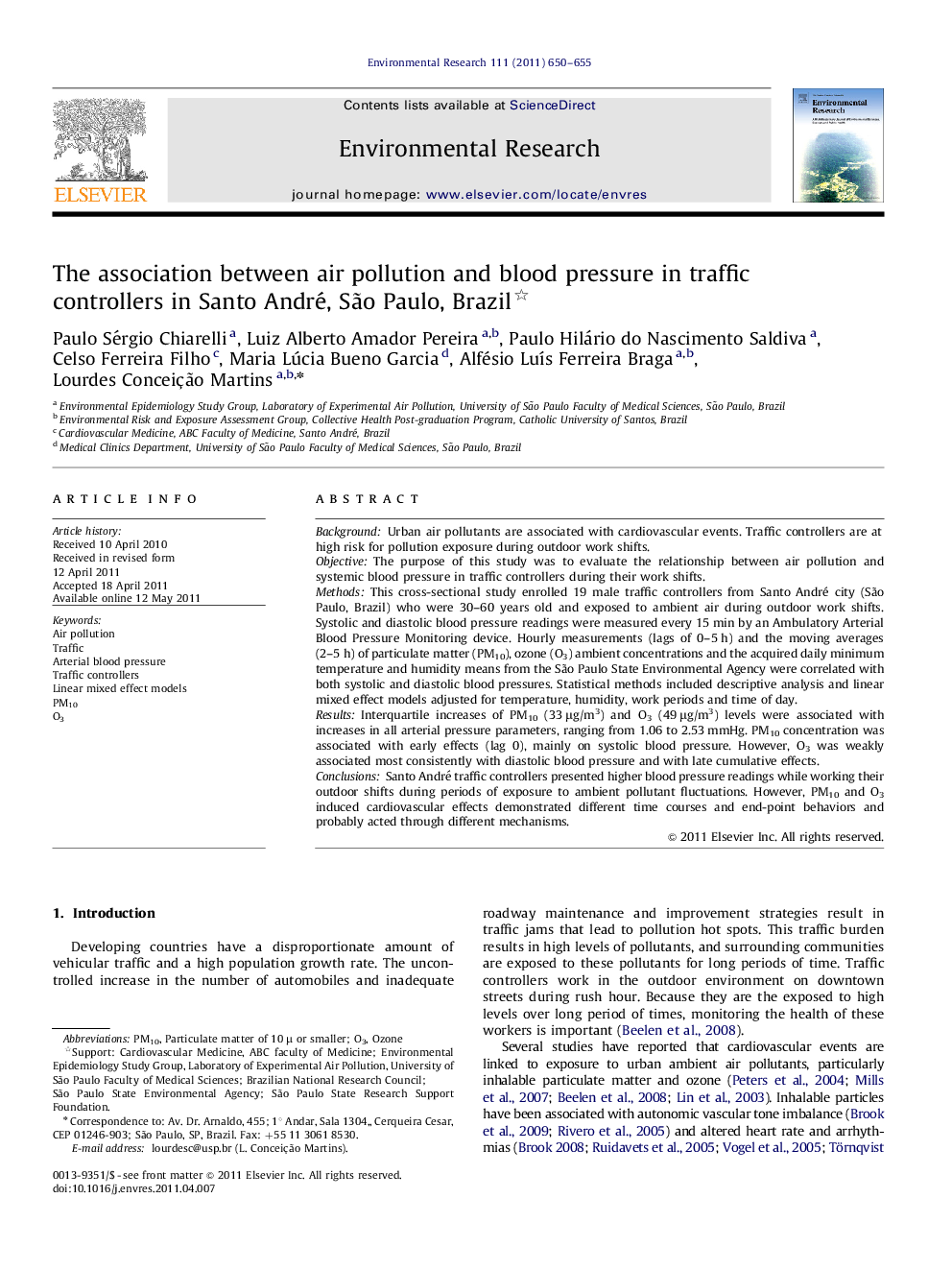| کد مقاله | کد نشریه | سال انتشار | مقاله انگلیسی | نسخه تمام متن |
|---|---|---|---|---|
| 4470105 | 1314390 | 2011 | 6 صفحه PDF | دانلود رایگان |

BackgroundUrban air pollutants are associated with cardiovascular events. Traffic controllers are at high risk for pollution exposure during outdoor work shifts.ObjectiveThe purpose of this study was to evaluate the relationship between air pollution and systemic blood pressure in traffic controllers during their work shifts.MethodsThis cross-sectional study enrolled 19 male traffic controllers from Santo André city (São Paulo, Brazil) who were 30–60 years old and exposed to ambient air during outdoor work shifts. Systolic and diastolic blood pressure readings were measured every 15 min by an Ambulatory Arterial Blood Pressure Monitoring device. Hourly measurements (lags of 0–5 h) and the moving averages (2–5 h) of particulate matter (PM10), ozone (O3) ambient concentrations and the acquired daily minimum temperature and humidity means from the São Paulo State Environmental Agency were correlated with both systolic and diastolic blood pressures. Statistical methods included descriptive analysis and linear mixed effect models adjusted for temperature, humidity, work periods and time of day.ResultsInterquartile increases of PM10 (33 μg/m3) and O3 (49 μg/m3) levels were associated with increases in all arterial pressure parameters, ranging from 1.06 to 2.53 mmHg. PM10 concentration was associated with early effects (lag 0), mainly on systolic blood pressure. However, O3 was weakly associated most consistently with diastolic blood pressure and with late cumulative effects.ConclusionsSanto André traffic controllers presented higher blood pressure readings while working their outdoor shifts during periods of exposure to ambient pollutant fluctuations. However, PM10 and O3 induced cardiovascular effects demonstrated different time courses and end-point behaviors and probably acted through different mechanisms.
► We analyzed air pollutants effects in blood pressure of traffic controllers.
► We used linear mixed effect models controlling for weather variables and work shifts.
► Inhalable particulate matter and ozone increases led to increases in systolic and diastolic blood pressures.
► Particles presented acute effects while ozone presented a lagged effect.
Journal: Environmental Research - Volume 111, Issue 5, July 2011, Pages 650–655